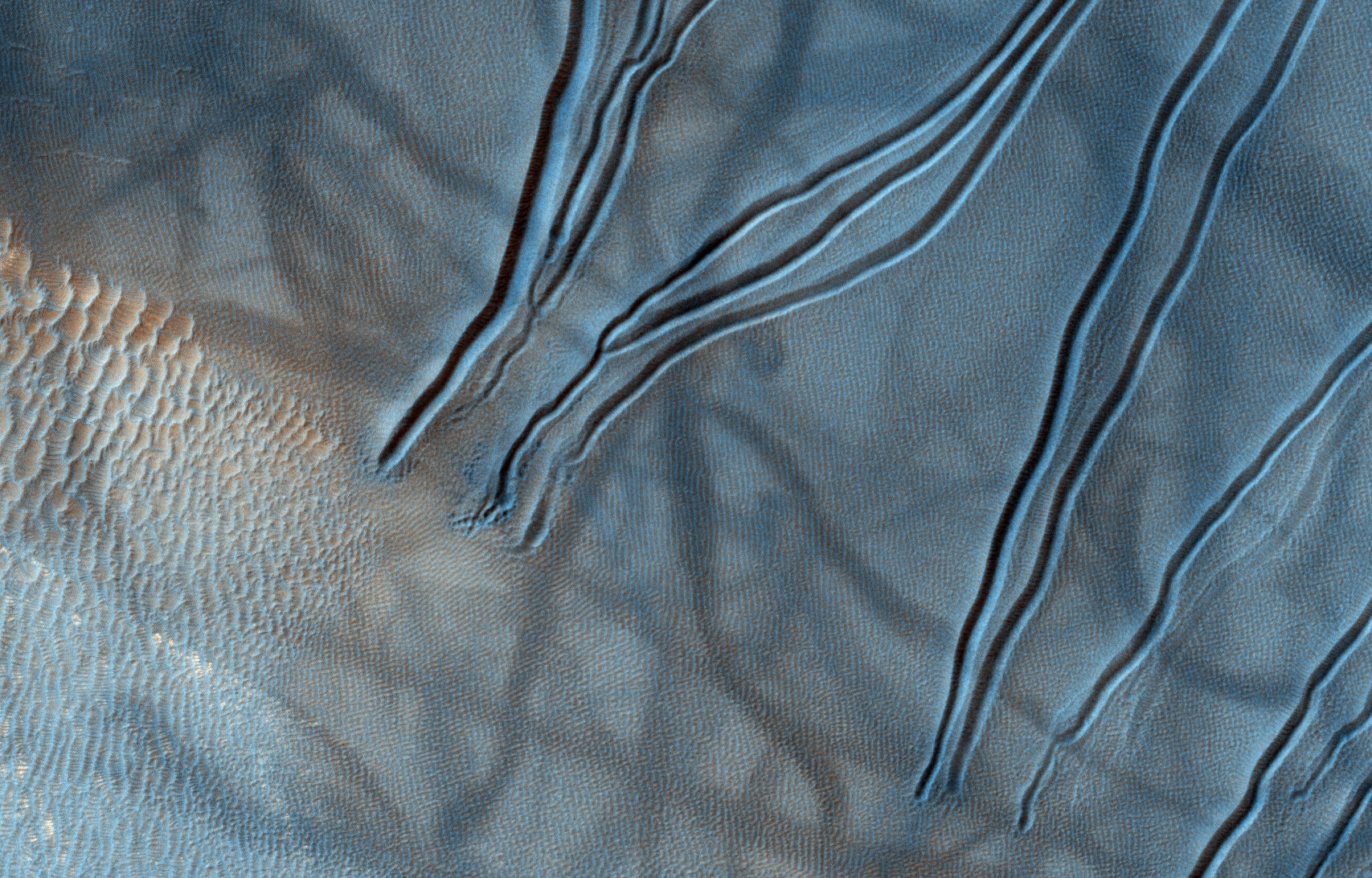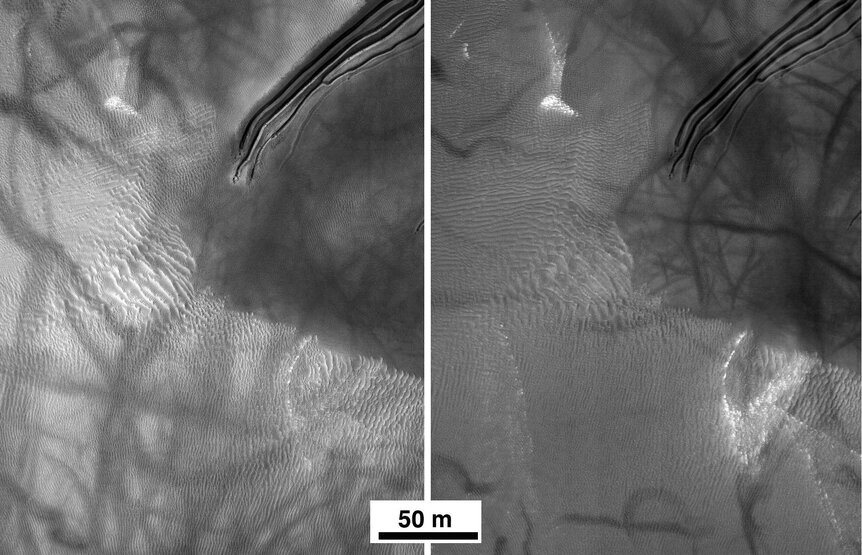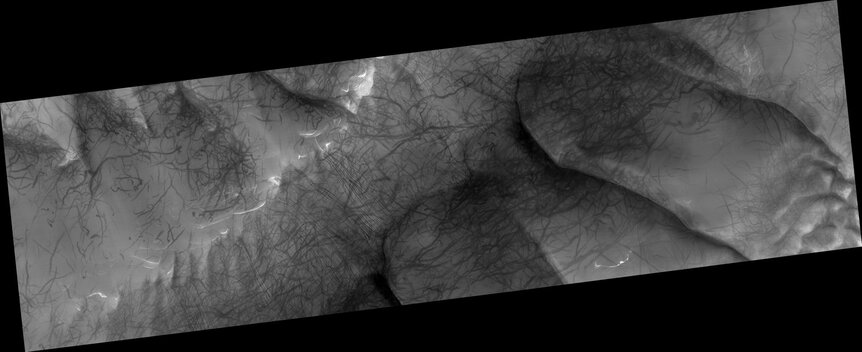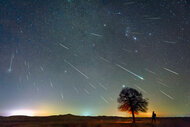Create a free profile to get unlimited access to exclusive videos, sweepstakes, and more!
On Mars, better it's the dust devil you know

I recently wrote about weather on Mars, such as it is. This included clouds moving across the sky in a recent Mars InSIGHT video, which is pretty amazing.
But I also talked about dust devils, a phenomenon I love. These look like tornadoes, and are similar in that they are both vortices, rotating columns of air. But they are born very differently. Tornadoes form due to complex interacting updrafts and downdrafts of air in a storm cloud. Dust devils, though, don’t need storm clouds. Wind blowing across the ground can create long cylinders of rotating air, and then air rising due to sunlight warming the ground causes the rotating vortex to lift up and become vertical.
I’ve seen many of these myself, from small vortices that carry leaves down a sidewalk to one I saw from over a dozen kilometers away on a highway in Utah. That one was huge.
While Mars doesn’t get tornadoes — it’s not known for cumulonimbus clouds — it does get dust devils. Hoo boy, does it. The image in the earlier post shows many tracks they sometimes leave behind. We see these tracks when the dust devils form over areas that have dust on them. This dust is very fine-grained and tends to be made of iron oxide — rust! So it’s pinkish-red, while many times the surface under it is darker basaltic rock. The dust devils remove the dust, leaving behind tracks that are dark since we see the basalt underneath.
But a pair of images recently released by the folks behind the HiRISE camera on the Mars Reconnaissance Orbiter really surprised me: They show how much and how rapidly these tracks change. In just three months, the same region looks completely different… but even cooler, it wasn’t the dust devils that did the deed.
The image on the left was taken by HiRISE in June 2007, and the one on the right in September of the same year. These show Russell crater, a huge impact crater over 130 km across in the Martian southern mid-latitudes. The tracks in the first image were formed in late spring or summer, which is typical for Mars; you need sunlight to heat the surface so the air can rise and form the devils.
Later that season, though, a dust storm arose that blew all that dust around, erasing the tracks like a planetary etch-a-sketch. But then new dust devils formed, creating all the new tracks in the September image! It goes to show just how thinly layered the dust is on the Martian surface.
I thought that was pretty cool, and worth showing y’all… but then I looked even more closely at the image and saw something else that was worth pointing out.
This color image was created by combining shots taken through red, green, and blue filters, and is higher resolution than the images above (it’s also not exactly what your eye would see; basalt is grey but looks bluer here). For scale, those deep gullies are only a few meters across at most; an athletic person could probably jump over them (especially in the lower Martian gravity).
But what are they? We see gullies like this all over Mars, always going from high elevation to lower. They’re very common at the edges of crater rims, for example, and planetary scientists are still arguing over what causes them in detail. Some think they might be carved by water! Ice under the surface warms in the spring and summer and erupts out, flows downhill to create the grooves, then boils away in the low atmospheric pressure. Other scientists think they might be from carbon dioxide frozen beneath the ground doing the same thing, or even more complex molecules called clathrates.
While this image may not solve that, when I took a closer look at the heads of the gullies I was surprised to see lots of little dimples. These are pits in the ground also due to some subsurface substance warming and bubbling up! You can see chains of them where they grew and overlapped, as well as relatively isolated ones. That’s pretty cool; I suspect if you get enough close enough together they can combine their forces to create a cascade of material that then flows downhill (to the upper right in this image).
Now mind you, I’m quite sure this is no surprise to any planetary scientists — the images were taken 12 years ago, after all, and have been extensively studied — but I hadn’t seen this myself, so it caught me unaware.
I gotta say: Mars! What a place. There’s still so much more to know about it. Of course, that’s why we call it exploration. But the science aspect of it is so fun! The more we understand, the more we understand the more there is to understand. And on this scale, at this resolution, there’s a whole lot of Mars to understand.
In this case, I’m just as happy with the devil I know as I am with the devil I didn’t.
P.S. And hey! Follow HiRISE on Twitter. You’ll be glad you did.





























